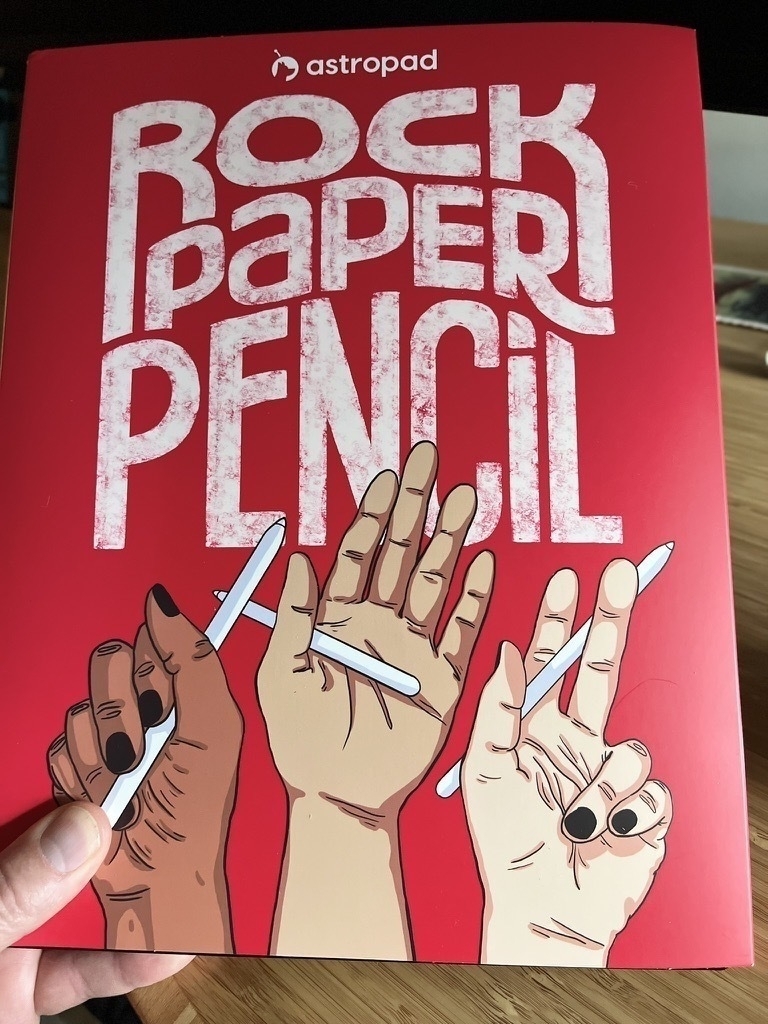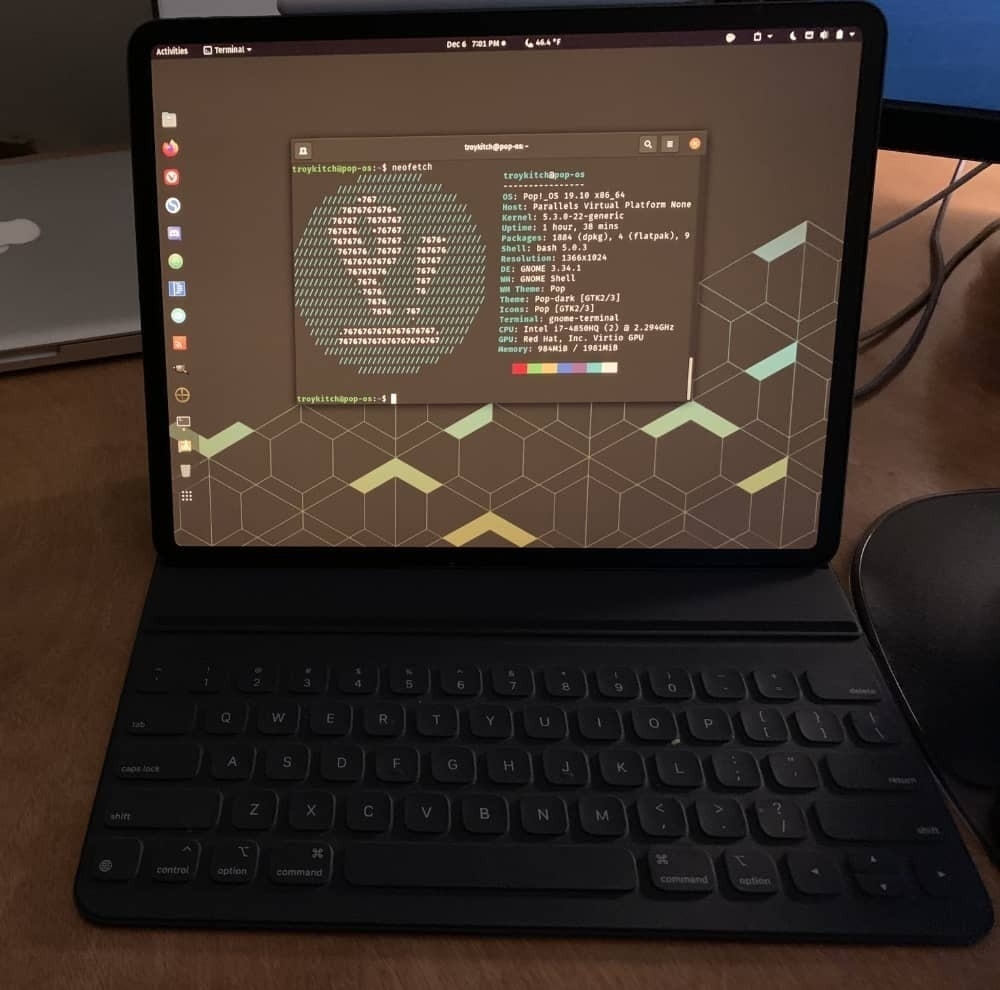This is from 2019, but I only discovered it today: A shortcut to get original URLs from Apple News. It’s so annoying that this is necessary, but here we are. www.macobserver.com/link/get-…
-
-
Rock Paper Pencil
Received the Rock Paper Pencil kit from Astropad today, and I’m impressed with the pencil/paper feel on my iPad. I’ve tried many (most) of these solutions and this is by far the best experience. The magnetic, removable screen cover and fine point pencil tips are brilliant. Worth it if you like to draw with your device.

-
I experimented with night shots using my iPhone 13 Mini while at Savage River. I took a shot as the near-full moon rose over the mountains on a cloudy night. This is a shot at 9 PM with a 10-second exposure, handheld. It was very dark, so I wasn’t expecting much. I was pleasantly surprised.

-
Linux on an iPad

Pop! OS on an iPad I recently "upgraded" an old 2009 Macbook Pro with Elementary OS, a fantastic Linux distribution. This led me down the distro hopping path, exploring way too many different Linux distros on my primary 2013 Macbook Pro using Parallels.
Then it occurred to me that to try out Linux on my iPad, just for kicks. Turns out it works great, provided you have a tool to run virtual machines and a Luna Display adapter. Above is a screenshot of my iPad displaying Pop! OS via my Macbook. Maybe this isn't the most useful thing in the world, but it's pretty cool to use my Apple pencil on Linux.
As an aside, my forays into Linux have been so enjoyable that I'm strongly considering switching to a System76 machine when my Macbook Pro kicks the bucket. I hope to hold out until System76 launches their first in-house designed laptops.
-
A Scourge of Starlings ...
https://player.vimeo.com/video/62074237
… or a ‘murmuration,’ ‘constellation,’ ‘filth,’ ‘vulgarity,’ ‘chattering,’ ‘cloud,’ ‘congregation,’ ‘constellation,’ or ‘clutter’ (I’m not making these up). Whatever you choose to call a flock of starlings, these birds are impressive flockers.
The above video was the scene across the street from our house a few days ago. By starling standards, this was a very modest ‘filth.’ Probably only a thousand or so birds were perched on the trees above our neighbor’s house. The impressive part of it was the deafening noise they made on an otherwise quiet morning.
While starlings may be a scourge to many a birder, they are certainly interesting. Not only are they peculiarly loud, they often swarm together in vast numbers, demonstrating principles of emergent behavior on a grand scale. If you haven’t seen the following videos, you have to watch:
https://player.vimeo.com/video/9606636
Starlings in North America have an interesting backstory. Here’s the story, sourced from iBird Pro: one hundred of these non-native birds were released in Central Park in 1890 by an industrialist intent on establishing a U.S. home for all birds mentioned in the works of Shakespeare. Now there are 200 million starlings roaming the countryside.
Speaking of. If you enjoy birding and use an iDevice, you owe it to yourself to get iBird Pro. Or Peterson Birds of North America. Or Audubon Birds. I have all three, acquired at different points when they were on sale. They’re all good, each with different strengths. iBird Pro is the most popular and offers a lot of depth, but the UI tends toward the cluttered and confusing; in contrast, Peterson Birds offers a fantastic UI for quickly identifying birds and has outstanding illustrations; Audubon Birds is somewhere in between in terms of UI, but stands out from the pack with a really cool service called eBird, which is an easy way to ‘log’ bird sightings and to see what species have been spotted by citizen birders near your present location. I hesitate to name one of these apps as the ‘best.’ If you enjoy birding, my advice is to wait for app sales and get all of them (I picked up two of these apps for .99 cents).